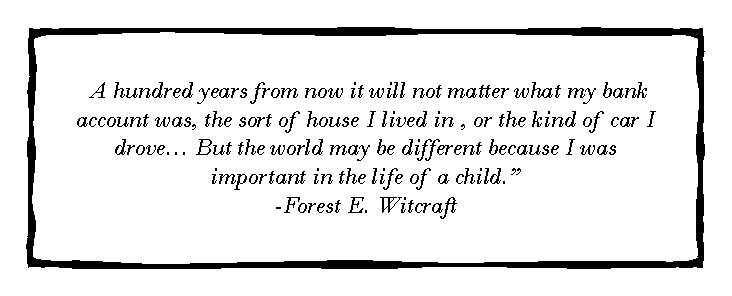
Saturday, December 22, 2012
"With resilience, children can triumph over trauma; without it, trauma (adversity) triumphs." - Edith H. Grotberg Ph.D.
"Free the child's potential, and you will transform him into the world."- Maria Montessori
"Children are like wet cement. Whatever falls on them makes an impression.- Dr. Hiam Ginnot
"A teacher affects eternity; he can never tell where his influence stops.
- Henry Adams
"Every child comes with the message that God is not yet discouraged of man."
- Rabindranath Tagore
"A teacher is a compass that activates the magnets of curiosity, knowledge, and wisdom in the pupils."
- Ever Garrison
"What we want is to see the child in pursuit of knowledge, and not knowledge in pursuit of the child."
- George Bernard Shaw
I personally want to thank all of those who showed me support during this semester. I appreciate all of the comments on the blog as well as on the discussion panel. I would especially like to thank Lindsey and Sharon for their kind words and support on my blog. Thank you ladies and I look forward to working with you in the near future.
Friday, December 14, 2012
Saturday, December 8, 2012
Robin C. Miller
Week 6
Testing
For Intelligence
Personally, I do not
believe that giving children any type of IQ or aptitude test truly assess a
child’s knowledge. Some children are just not great test takers and could do
better if they were given other methods to take a test other than written.
Teachers and administrators that make up the tests need to understand that not
every child learns the same. Every single child is “labeled” as an individual
for “individual” reasons. No one child is like one another. Testing children to
see how smart they are at this age level is very stressful not only, to the
children but also, to the parents and teachers. Pennsylvania teachers and
administrators are so fearful of failing the PSSA’s or other testing that all
they do is teach materials based on the test. What exactly is that teaching the
children?
In Japan, their
schooling is similar to ours. Japanese schools follow the old US model, with
elementary schools (shogakko) covering grades 1 through 6, junior high
schools (chugakko) covering grades 7, 8 and 9, and high schools (kotogakko)
covering grades 10, 11 and 12. Education in Japan is compulsory for children
between the ages of 6 and 15
Curriculum and assessment
In elementary and junior high schools, the curriculum is divided into
three major categories. In elementary schools, the standard curriculum
includes Japanese language, social studies, mathematics (mainly arithmetic),
science, life environment studies, music, arts and handicrafts, homemaking, and
physical education. In addition there is a program of moral education,
including attention to health and safety, self-discipline, public manners and courtesy
and environmental awareness. There are also programs of special activities,
which include ceremonies, cultural performances and sports. In elementary
schools, science is introduced in grade 3, and teaching is organized into a number
of topics that typically cover 10 to 14 lessons of 45 to 50 minutes each. For example,
a unit on ‘Levers’ might have the objectives that students learn: the names of
the parts of a lever what happens when the load, the fulcrum or the effort is
moved what needs to happen for the lever to balance The content of a topic is
typically designed to last less than the time allocated, so that the timetable
allows time for students to take a short test, and for teachers to take any necessary
remedial action with the whole class before moving on. These tests typically combine
open and closed items and focus on the ‘big ideas’ in the topic. For the
‘Levers’ unit above, for example, students might be shown four pictorial
descriptions and asked which would be the easiest to lift. The marks for these
tests, and for homework assignments, may feed into the term grade, which is
generally reported on a three-point scale, but this is a decision that is made
by the school, rather than the prefecture or the ministry of education.
Subscribe to:
Comments (Atom)
